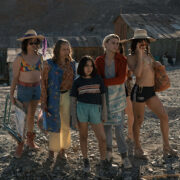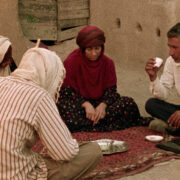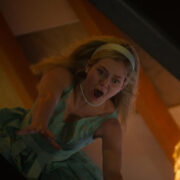Why Is Godzilla King Of The Monsters?
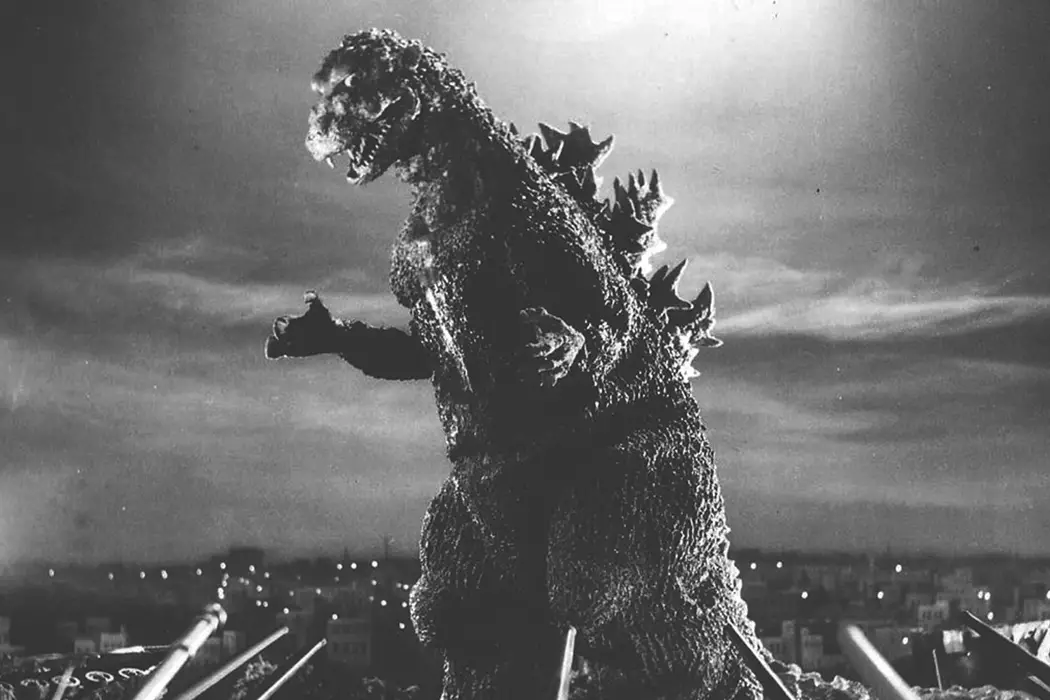
(he/him; bisexual) I'm a 21 years old guy with depression…
65 years have passed since the first film by Ishirō Honda premiered in 1954 in Japan and the world witnessed Godzilla (or Gojira, the original Japanese name) for the first time in all his nuclear power and prehistoric ferocity. For these 65 years he’s been on a long journey: destroyed many cities (but mostly Tokyo), been in space, a couple of times helped people to save the planet, fought King Kong, King Ghidorah, Mothra, Gigan, Megalon, Mechagodzilla, Hedorah, Destoroyah, Orga, Biollante and many others, and surprisingly enough had a son.
In the best moments Godzilla movies make you feel weak and powerless compared to the true King of the Monsters, and in not so great moments it’s a fun and ridiculous show in which Godzilla either destroys a city or is beating the shit out of some kaiju. Godzilla is the monster who was forged out of fear and grief of the Japanese people after atomic bombings of Hiroshima and Nagasaki, and out of the fear of World War III. Godzilla represents what technological progress or wrong ways of using it to be precise may lead us to.
With time, the end of the Cold War, and people’s understanding that nuclear weapons will be the end for all of us, the reason for Godzilla’s awakening changed from atomic bombs to basic nuclear power plants, which may still represent itself as a great danger to humankind. And somehow Godzilla was and still is a logical response to this danger and people’s fright before nuclear power and radiation.
Showa Era (1954-1975)
Showa Era is the first and longest era in the franchise yet. It’s started in 1954 and ended only in 1975 with Terror of Mechagodzilla. But although this era gave lots and lots of movies and a serious roster of kaijus, we saw a lot of insane stuff: Godzilla doing some sort of martial arts (Godzilla vs. Megalon); dialogues between monsters stylized like it’s a comic book (Godzilla vs. Gigan); baby Godzilla (Son of Godzilla); and Godzilla, Mothra and Rodan teaming up to defeat King Ghidorah (Ghidorah, the Three-Headed Monster) to name a few. Most of these movies are unforgivably alike and weren’t even trying to do anything new.
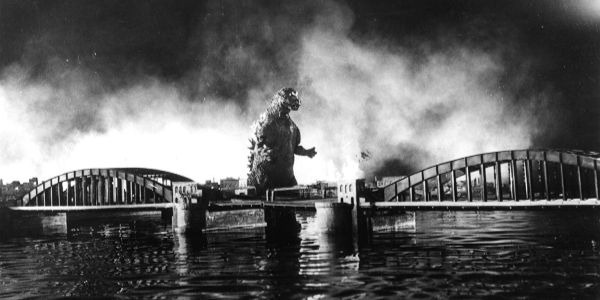
During this era, Godzilla took a path from near-antagonist character to literally a hero that saved the planet and helped humankind many times. The original 1954 movie wasn’t about Godzilla himself but the people whose lives he’s affected. With time Toho went into a different direction and films would consist out of a majority of uninteresting characters’ lives, a little bit of Godzilla fighting his foes, Godzilla walking into the ocean at sunset, freeze-frame and then finally, the credits. I would tolerate those movies if the action scenes didn’t age so badly.
And even though I wasn’t watching them every single day, it was still occasionally unbearable not to skip some of the scenes or even just turn the movie off. Obviously, this franchise mostly consists of B-movies, but it’s most definitely not an excuse for not making any effort to make decent storylines whatsoever. Toho continued playing this monotonous and safe game until the start of a new era in 1984.
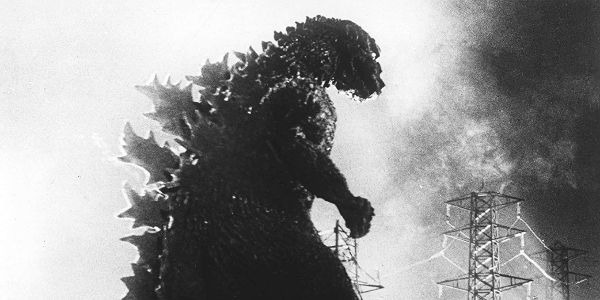
Heisei Era (1984-1995)
For Godzilla’s 30th anniversary, Toho decided to continue the series and make more money off of the most famous Japanese nuclear monster. This series ignores all the previous movies, but the first entry of this era uses the 1954 movie as a basis for the continuing storyline of Godzilla. In the first movie of 1984, Godzilla is the sole monster of the movie, the vibe is much darker, and it actually tries to do something different unlike most of its predecessors.
The Heisei era of Godzilla films excited me much more than the Showa era, except perhaps Return of Godzilla. But what came next totally copied the path of the previous era, although there aren’t many movies like in Showa Era that predominantly focused on the human interactions. They’re fairly forgettable too, and the only memorable movies are Godzilla vs. Biollante, but only because of how badass Biollante is (hope they will bring it back some time soon). And the last in the era, Godzilla vs. Destoroyah, where Godzilla is literally a nuclear ticking time-bomb, makes all of Godzilla’s origins that came from the real world even clearer. It follows the steps of the original movie and tracks Godzilla’s torment and pain as well as the development of oxygen destroyer.
Millennium Era (1999-2004)
This era is the most boring in the franchise yet, and also the one where the creators went crazy and sadly not in a good way, especially when they came up with an X-Men or Avengers type of group to help to protect the world from kaijus. When Roland Emmerich’s Godzilla became a box office hit in 1998, Toho felt the need to continue making movies about the beloved monster that finally became recognizable outside of Japan. Instead, they probably shouldn’t have touched it; their not very memorable despite having seen them less than a month ago. The only watchable among them is Godzilla Against MechaGodzilla, which went into cyberpunk so far that we get MechaGodzilla that didn’t want to fight Godzilla, and overall the movie has more interesting and less shallow characters than the other films.
American and Americanized Movies
I left American versions and cuts of Godzilla to the end because I think each of them actually says a lot about American industry, government, and the way they changed the way the masses view Godzilla. It began with Godzilla, King of the Monsters! which came out two years after the original movie in 1954. Basically this is re-edited Godzilla (1954) for American release, where they added an American journalist to the movie, and made him the center of the story while cutting out the most important characters from the original Japanese cut.
This cut is downright unbearable to watch: the American looks terribly alien in each scene, obviously rarely interacts with the characters from the original and when he does it looks silly. Hollywood destroyed the amazing atmosphere of the movie just to put yet another white man in a blockbuster, and while that’s not very surprising, it’s still upsetting, just as upsetting as the fact that they removed every mention of nuclear bombs from the movie, so this movie is also America’s vain attempt to make the world forget about Hiroshima and Nagasaki.
The next notable American entry in the franchise is Roland Emmerich’s Godzilla of 1998, which stopped Japan’s Heisei era, so Hollywood could make their own movie. They also changed the world’s opinion on what a Godzilla movie is; Emmerich destroyed some of the original concept of what a Godzilla movie is. They made the movie entirely about Godzilla destroying New York while reducing the characters in the film to mere extras.
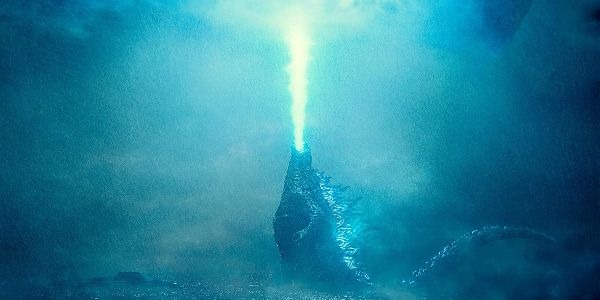
Thankfully there is another American version of Godzilla, directed by Gareth Edwards that does exactly everything a Godzilla movie should do and maybe even more. One thing about this film that supports my statement about Emmerich’s damaging the core concept of a Godzilla film, and that is that most of the criticism of Edwards’ resolved the “lack of Godzilla in the movie;” not just audiences complained about this, but surprisingly, critics too.
As I said before, “the original 1954 movie wasn’t about Godzilla himself but the people whose lives he’s affected,” and this movie does just that and does it perfectly. I stand by the opinion that this is the most haunting Godzilla movie in the franchise yet; just remember the halo jump set to György Ligeti’s Requiem that Stanley Kubrick used in 2001. POV shot and glimpses of Godzilla through the clouds making you feel like you’re nothing compared to the embodiment of god: Godzilla.
The Legacy of Godzilla
If in the West Godzilla is not a cultural heritage, in Japan he even has his own monuments. There are comic books, video games, anime about Godzilla, all kinds of Godzilla merch, not to count Japanese movie Shin Godzilla that came out two years after Edwards’ movie. Despite Godzilla’s somber origins and being a symbol of the danger of the nuclear weapon; he has become something that appeals to people around the world of all ages and backgrounds.
King of the Monsters
So why is Godzilla in fact King of the Monsters and not King Ghidorah? Because Ghidorah doesn’t have a roar that’s as frightening as the Jericho trumpet. I doubt that there is even one monster that remotely radiates the energy and has the recognition that Godzilla has. A monster that personifies a nuclear war, a monster that has been annihilating whole citites and other beasts for 65 years and counting, in particular with the new film, Godzilla: King of the Monsters just having been released this past weekend.
What was your first Godzilla movie?
Does content like this matter to you?
Become a Member and support film journalism. Unlock access to all of Film Inquiry`s great articles. Join a community of like-minded readers who are passionate about cinema - get access to our private members Network, give back to independent filmmakers, and more.
(he/him; bisexual) I'm a 21 years old guy with depression and social anxiety who found his voice in cinema and writing. I love writing, I don't consider myself as a good writer but as long it helps me to socialize and people like it I will continue to do so. I don't state that my opinion is the only righteous one, I can be biased and naggy but I always open to susprises and give EVERY movie I watch a chance.








